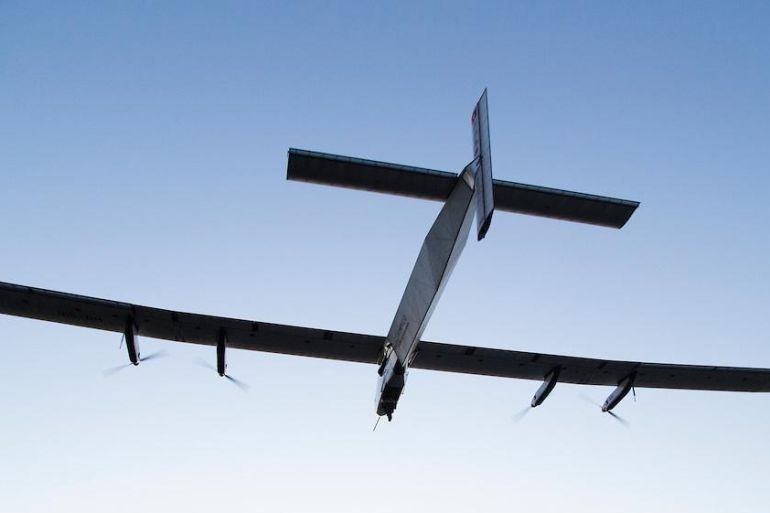Pacific solar flight aborted due to weather
Cold front compels experimental Solar Impulse 2 aircraft to make an unscheduled stop in Nagoya in Japan.

Bad weather between Japan and Hawaii has forced the solar-powered aircraft Solar Impulse 2 to abort its flight and return to Nagoya.
The plane set off from China on Saturday but had been in a holding pattern off Japan’s east coast while flight controllers analysed weather data along its planned route to Hawaii.
Keep reading
list of 4 itemsCould shipping containers be the answer to Ghana’s housing crisis?
Are Chinese electric vehicles taking over the world?
First pig kidney in a human: Is this the future of transplants?
“Unfortunately the current weather window to reach Hawaii has closed,” the team said in a statement.
“The cold front is too dangerous to cross, so we have decided to land in Nagoya airfield, and wait for better weather conditions in order to continue.”
BREAKING NEWS: Weather window toward Hawaii has deteriorated. We decided to make an intermediate landing in Nagoya! pic.twitter.com/crziXXRX10
— SOLAR IMPULSE (@solarimpulse) June 1, 2015
Despite the diversion the flight has already set a record.
“Andre’s flight will have lasted around 40 hours and this will be the longest flight ever made by a solar-powered airplane in terms of both duration and distance,” the team said.
The flight from China to Hawaii is the seventh leg in an attempt by the Swiss team to fly around the world using just the energy of the sun.
The flight had been described as one of the riskiest legs of a risky mission.
It had been expected to take more than six days but 36 hours into the flight the team decided to turn back to Japan, and wait for better weather.
The team had said any significant delays during the flight would put additional stress on the plane’s pilot Andre Borschberg.
He is only be able to sleep for 20 minutes at a time in the plane’s tiny cockpit and the prospect of bad weather would have tested his ability to complete the flight.
“The pilot and the aircraft are safe, and safety is the priority,” the team said.
“Andre will continue to fly at a high altitude, the batteries are full and we have very good conditions for an evening landing.”
Unfavourable weather over the Pacific had already delayed the flight, forcing it to stay in the Chinese city on Nanjing significantly longer than planned.
The team said despite the setback they are happy with the performance of the aircraft.
Its batteries, charged exclusively by over 17,000 solar cells along it wings, had been at almost full charge while the plane flew in a holding pattern off Japan.
We are delayed in our #RTW mission, but at a moment in which we are really happy about the behavior of the aircraft pic.twitter.com/NkZyvIZ6Zg
— Bertrand PICCARD (@bertrandpiccard) June 1, 2015
Solar Impulse 2 has a wing span wider than a jumbo jet but weighs little more than a car and started its round-the-world flight on March 9 in Abu Dhabi.
On its flight from Muscat to Ahmedabad it set the world record for the longest single manned solar-powered flight (1,468km).
On a subsequent leg between Varanasi and Mandalay it set the record for the fastest manned solar-powered flight with a maximum groundspeed of 216 km/h.
Rather than being any kind of showcase for the future for aviation, the Solar Impulse project hopes its journey around the world using just the energy of the sun will demonstrate how new technology can be used.